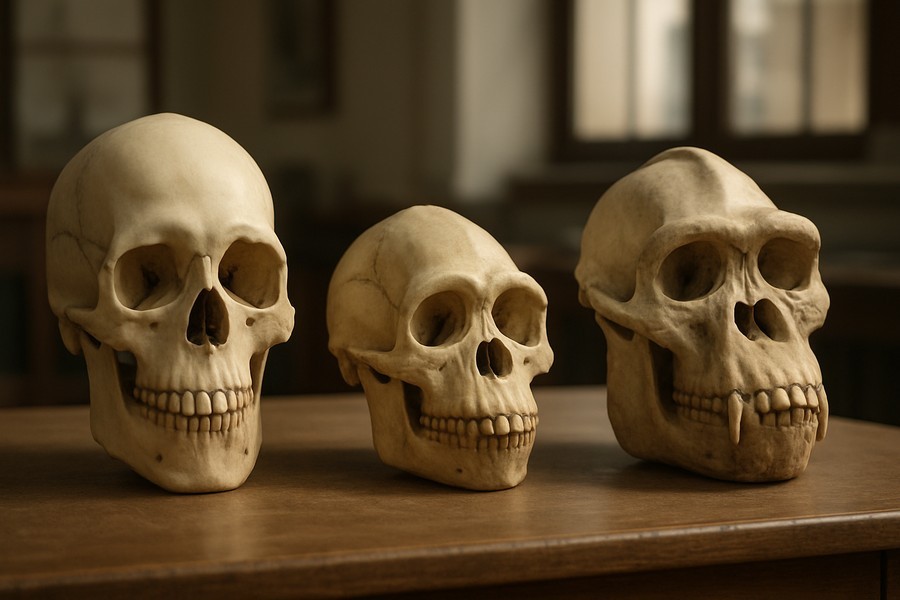
3D Skull Analysis Reveals Rapid Evolution of Humans Among Primates
Recent research has shown that humans, in comparison to other apes, experienced a surprisingly swift evolutionary process, developing larger brains and flatter faces. These traits likely provided key evolutionary benefits.
The study, which focused on the evolution of ape skulls over millions of years, discovered that the human skull structure evolved at a significantly faster rate than any other closely related ape species.
The Speed of Human Evolution
The head researcher of the study mentioned, "Out of all the ape species, humans have evolved the fastest. This quick evolution is most likely due to the essential skull modifications linked to having a big brain and small faces. These changes are crucial to humans and evolved very rapidly. While the advantages of having a large brain are clear, there may also be social factors that have influenced our evolution."
As part of the research, scientists analyzed three-dimensional virtual models of the skulls of various modern primate species. This included seven species of 'great apes' such as humans, gorillas, and chimpanzees, and nine species of 'lesser apes' like gibbons.
Divergent Evolutionary Paths of Great and Lesser Apes
About 20 million years ago, 'great apes' and 'lesser apes' took different evolutionary paths. During this period, the anatomical diversity of 'great apes' drastically increased, whereas the diversity of 'lesser apes' remained relatively unchanged. Consequently, the skulls of different 'lesser ape' species look strikingly similar, whereas those of 'great apes' are more distinct. Among the 'great apes', however, humans evolved at a faster pace than other species.
Process of Comparative Skull Analysis
To conduct a comparative analysis of skull variations, researchers divided the skulls of each species into four main sections: the upper face, the lower face, the front of the head, and the back of the head. They employed a computer to contrast the 3D scans and numerically determine the variances between species in each section. This proved to be the most detailed comparative analysis of 3D skull structure across these closely related ape species.
Most 'great apes' have large faces that project forward and relatively small brains. In contrast, humans have flatter faces and large round heads. Interestingly, gibbons, which are 'lesser apes', also have flat faces and round heads, but their brains are much smaller.
Insights from Comparative Analysis
The research team used the slow evolution and limited diversity of 'lesser apes' as a control to compare the variation in 'great ape' skulls. They found out that humans evolved about twice as fast as they would have if there weren't extra factors promoting additional changes.
However, researchers warn against jumping to conclusions. While it might be easy to assume that the main driving force behind the rapid evolution of humans was the evolutionary benefits of increased intelligence from larger and more complex brains, social factors could also have played a role.
The lead researcher added, "Gorillas, having the second-fastest evolutionary rate of their skulls among 'great apes', have relatively small brains compared to other 'great apes'. In their case, the changes were likely driven by social selection, where larger cranial crests on top of their skulls are associated with higher social status. It's possible that some similar, uniquely human social selection may have occurred in humans as well."
